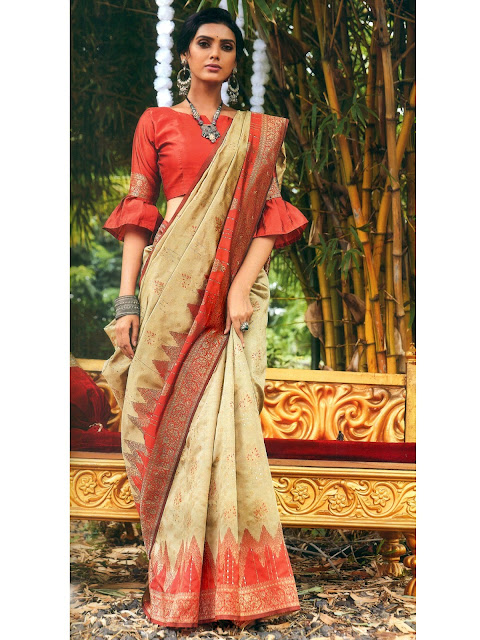Why is Chanderi saree so costly? | Designer Indian Sarees
Some Interesting Facts About Chanderi Sarees:
Chanderi sarees are well known due to their lightweight construction, elegant patterns, glossy transparency, and vibrant hues. Essentially, Chanderi is the name of a significant historical city in Madhya Pradesh's Ashoknagar district. It is a magnificent city, southwest of the Betwa River, surrounded by stunning hills. The history of this city dates back to the 11th century, when it was near the important trade routes that connected the ancient Gujarati ports to Malwa, Mewar, Central India, and the Deccan.
Chanderi is the birthplace of Chanderi Sarees, and it is situated on the outskirts of the two cultural centres of Malwa and Bundelkhand. This city, which is situated in the stunning Vindhyachal hills, is where these sarees are created and weaved. The mythological Shisupal, Lord Krishna's cousin brother, is credited with founding this location. It is thought that Chanderi is where weaving culture first emerged in the second century. In the current situation, this city has emerged as a significant hub for traditional saree weavers. This area has developed into a centre for Chanderi Sarees due to the strong demand. These saris are created using a unique weaving technique and a blend of silk and cotton. The production of sarees in India was formerly limited to Muslim weavers, but around 1350 the Koshti weavers from Jhansi relocated to Chanderi. During the Mughal era, Chanderi saree sales reached their height.
The industry is developing year after year in terms of weaving technique, technology, equipment, fabric composition, etc. At Chanderi, creating sarees is not a commercial endeavour; rather, it is a regional craftsmen and artisans' history, culture, and legacy. These artisans are expert weavers who frequently receive praise from royalty and famous people.
Depending On How Much Zari Is Already On The Saree, The Cost Rises
Cotton warp and wefts that were spun by hand were initially used to weave Chanderi cloth. Japanese silk was established by the craftsmen in the decades that followed the industrial revolution. To weave silk sarees, they combined cotton cloth with Japanese silk. Because they combined silk and cotton, they were able to make a significant profit and gain recognition compared to earlier versions of sarees. Unlike other saree types, Chanderi sarees is a pricey and elegant fabric.
The delicateness of the extra weft motifs interspersed with the charm and beauty of Chanderi sarees are enhanced with zari woven works, which are typically woven by hand and have long appealed to royalty's refined tastes. The chanderi saree is a beautiful combination of heritage and modernity. Modern, fashion-conscious people highly appreciate its sheer texture and transparency.
Types Of Chanderi Sarees:
Three different types of Indian sarees are used to make Chanderi: Chanderi pure silk sarees, Chanderi cotton sarees, and Chanderi silk cotton sarees. Popular patterns that can be found on many sarees are Nalferma, Dandidar, Chatai, and Jangla, among others. The majority of sarees have traditional motifs like peacocks, antique coins, floral art, and geometric shapes, among others. These designs are used by the craftsmen to create the sarees. Gold and silver brocade, fine silk, and lavish embroidery are applied by the artisans to the sarees to add class.

Comments
Post a Comment